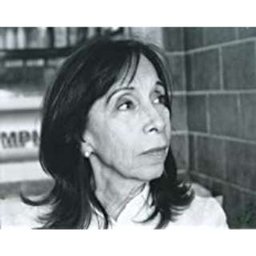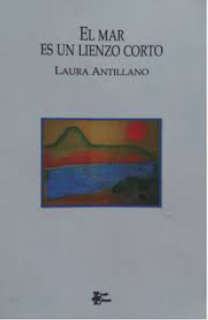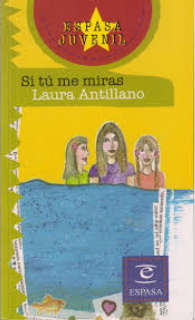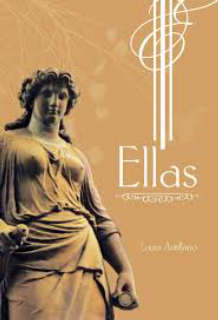Laura Antillano

Laura Antillano
Laura Mercedes Antillano Armas (CaracasCaracas, Venezuela, August 8, 1950) is a Venezuelan writer, who has dabbled in the genres of essay, poetry, short story, novel, literary critic and children's literature. She has also worked as a Puppeteer, film, television, radio screenwriter and cultural promoter. From her 10 years she was linked to the city of Maracaibo and later, from 1976, to the city of Valencia.
Biography
She is the daughter of the painter Lourdes Armas and the journalist Sergio Antillano.
In 1961 the family moved to Maracaibo, where she continued her studies. It was also in that city where writing discovered literature. In fact, when she was just 15 years old, she published her first stories on the Arts and Letters page of the newspaper Panorama [11].
Ever since I can remember, I have been passionate about reading, perhaps due to the love that my parents gave to my learning, or perhaps, to a mixture of various factors, as Miguel Ángel Cornejo would say: “success is the fruit of preparation, opportunity and luck ”. Of course, in my childhood those elements were present.
Fed by my parent educators who gave me the light of reading from an early age.
I had a library at home, stocked with various titles and an always rainy climate that kept me away from the street to avoid asthmatic relapses, so my only world and escape for fun was right in the pages of those texts that my dad chose for me[10].
She graduated as a Bachelor of Letters mentioning Hispanic Letters at the University of Zulia on March 7, 1972 and the same year she published her first novel: La muerte del monstruo come-piedras. She is a graduate of the Master in Venezuelan Literature from the same University. She entered as a professor at the University of Carabobo in 1976 and currently continues in it making her teaching contribution as a retired professor.
She created the “Literature” and “Children” pages of the Hora Cero newspaper, maintained a column in the El Carabobeño newspaper and is currently a columnist for the Últimas Noticias and Notitarde newspapers, as well as a page promoting reading, cinema and others expressive means in the Sunday Magazine of that publication.
In addition to her work as a writer and teacher, Laura Antillano has also dabbled in film, television and radio.
In 1982, she worked with director Olegario Barrera on the script for the movie “Small rematch”, based on an original short story by Antonio Skármeta, an initiative that earned them the award for Best Feature Film Screenplay at the Mérida National Film Festival and the the National Association of Cinematographic Authors[11].
She also won the Foncine Prize for the Best Cinematographic Script for Children and Young People with the script With a certain heart (1987) written four hands with Néstor Caballero.
In addition, she was part of the scriptwriter group of Radio Caracas Televisión, directed by César Bolívar, in the execution of the television production of the stories of the Venezuelan writer Rómulo Gallegos, where she was in charge of the scripts for "The fruit of the nearby stranger" and "The dwindling hour."[12]
In 1989, she signed the manifesto of welcome to Fidel Castro, where 911 Venezuelan intellectuals greeted the visit of the Cuban leader.
As for her radio work, the production and direction of the Saturday program "La palmera luminosa", broadcast by the University station 104.5 of the University of Carabobo for 12 years, stands out[11].
Under her idea, the script for the fictional short “Entre líneas” is written, made by Emilia Anguita, produced by the Film Department of the University of the Andes (Venezuela) and the Municipal Council of the Federal District[12].
She adapted for television the story she wrote "La luna no es de pan-de-horno", made under the production of César Bolívar, directed by Luisa de la Ville, and whose leading roles are performed by Beatriz Vásquez, Jariana Armas and Rafael Gil.
She currently chairs the La Letra Voladora Foundation and produces an annual event, with the support of the National Autonomous Center for Cinematography and the National Book Center, entitled "Encounter with Literature and Audiovisual for Children and Young People".
Literary production
In her works there is a constant search for femininity.
There are female figures who seek to find an identity or build one from their past and through other female characters from past times.
Her texts are characterized by being built around a very individual sensitivity, with clear autobiographical overtones, a woman's gaze, which elaborates narrative themes from the most immediate experience, everyday life, and from a feminine fictional self-elaborated with the threads of memory.
From this center, the female self multiplies in others, it seeks in dispersion, beyond itself, in a writing that takes various forms: from fragmentary narration in different manifestations, to linear narration, as well as the coexistence of multiple languages that encompass the colloquial, advertising language, intimate writing, poetic discourse[13].
Her works are marked by the encounter of an individual memory with a collective memory.
The writer's personal geography enters her fictions: Maracaibo, Caracas and Valencia.
The landscapes of childhood and youth, the old Marabino market, the Silence of Carlos Raúl Villanueva or the tree-lined avenues of Camorucos in Valencia and the buildings of the University of Carabobo, so her, become the configuration of a collective map of an imaginary of the country, which meets other imaginary such as those of popular culture: cinema, popular music, advertising, press news, universal culture, in order to transcend family and personal life and meet again in history.
All this is permeated by a subjectivity that combines nostalgia with amazement, weaves narratives loaded with affective content and, sometimes, with high poetic flight[13].
Novel
La muerte del monstruo come-piedra, 1971 [1996].
Perfume de gardenia, 1982 [1984; 1996].
Solitaria Solidaria, 1990 [2001; 2007].
Las aguas tenían reflejos de plata, 2002.
Narcisa ha desaparecido, 2006.
Ciudad Abandonada, 2012.
Story
La bella época, 1969.
Un largo carro se llama tren, 1975.
Haticos casa No 20, 1975.
Dime si adentro de ti no oyes tu corazón partir, 1983 [1992].
Cuentos de película, 1985 [1997].
Ciudad abandonada, 2012.
La luna no es de pan-de-horno, 1988.
Tuna de mar, 1991.
La luna no es de pan-de-horno y otros relatos, 2005 [2007].
Children's literature
La muerte del monstruo come-piedra, 1971 [1996].
¿Cenan los tigres la noche de Navidad?, 1991 [2005].
Diana en tierra wayúu, 1992 [reed. en 1993, 1994, 1997, 2002, 2004].
Emilio en busca del enmascarado de plata, 2005.
Narcisa ha desaparecido, 2006.
Si tú me miras, 2006 (juvenil).
Leer a la orilla del cielo. Antología de cuentos venezolanos para niños, 2010.
La araña, 2010.
La señora Morcilla no tiene cosquillas, 2011.
"I think when I write for children I start by putting myself in the place of the girl or boy, and that means taking back the girl I was and seems to still be around."[10]
Poetry
El verbo de la madre, 2005.
Migaja, 2006.
Álbum de fotos, 2007.
Libro de amigo, 2007.
Las paredes del sueño (coaut), 1981.
Essay
Literatura infantil e ideología. Análisis crítico de nuestra realidad, 1987.
¡Ay! Qué aburrido es leer: el hábito lector y el cuento de la infancia, 1991, [1998].
Apuntes de literatura para jóvenes y niños, 1997.
Elogio a la comunidad, 2004.
La aventura de leer, 2005.
De la escuela salen los caminos: Puerto Cabello y Juan José Mora, 2006.
Crónicas desde una mirada conmovida, 2011.
Awards
Among the awards she has won[14]:
She is the winner of the 2012-2014 National Literature Prize[11].
José Rafael Pocaterra Biennial Prize, Poetry mention with the work: Migajas (2004).
Ministry of Culture Prize for Literature Prize 2011.
Ascesis to the Miguel Otero Silva Prize of the Planeta publishing house.
from Venezuela with his novel: Solitaria solidaria (1990).
Short Story Prize from the newspaper El Nacional with his short story: "La luna no es de pan-de-horno" (1977).
Julio Garmendia Prize from the Central University of Venezuela with the short story: "Caballero de Bizancio" (1975).








